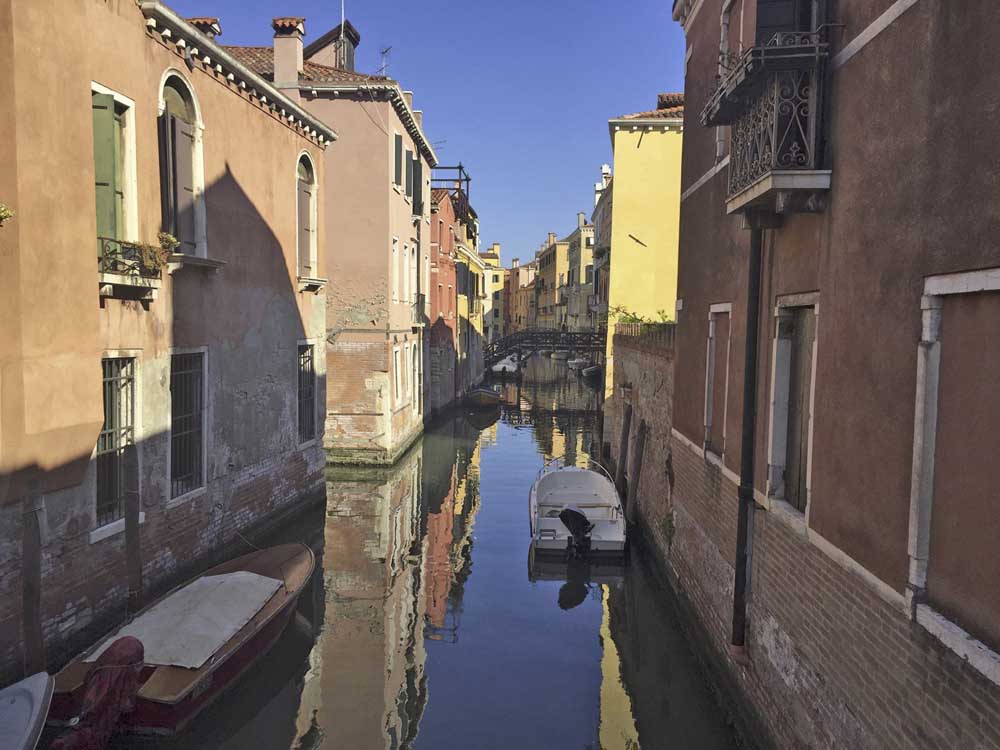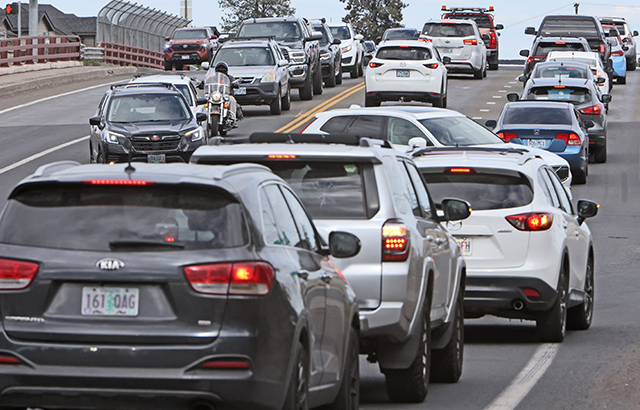Tourism is Venice’s lifeblood — and its problem
Published 12:00 am Sunday, September 25, 2016

- Jack Chang / The Sacramento (Calif.) Bee via Tribune News Service The souvenir shops and luxury stores give way in Venice’s Cannaregio district in the north of the city to simple residences and cozy restaurants.
The summer sun had barely risen over Venice’s quiet waterways when the voices started up again.
Blaring in Mandarin Chinese and French from the loudspeakers of cruising tour boats, they told the centuries-old saga of this fabled, once mighty city in a few minutes, as passengers sipped spritzes and took selfies in front of the passing palazzos and cathedrals.
Trending
For the rest of the day, the voices would echo throughout this miracle of a city, known as La Serenissima, or the Most Serene One, about once every half an hour until night fell over St. Mark’s Square and the Doge’s Palace. For the dwindling community of Venetians who still live and work in this sprawling maze of walkways and canals, those voices were yet another reminder that their celebrated home was under threat.
When I arrived in Venice last month for a four-day visit, I felt that same rush of anticipation I remembered the first time I saw the New York skyline appear over the New Jersey Turnpike or glimpsed the Great Wall of China through the smog north of Beijing. Venice was a landmark in humanity’s long journey, part of the world’s collective dream. I wanted to live in that dream for a few days and pay my respects.
However, the more I encountered the swarms of photo-taking tourists blocking Venice’s many footbridges and squares, I realized that I was, in fact, part of a larger problem.
This city is undergoing an existential crisis as its once-dominant shipyards, mirror factories and traders have disappeared, to be replaced by a monolithic tourism economy. As the residents in the more visited parts of New Orleans, Rio de Janeiro and Hong Kong can attest to, a neighborhood oversaturated with tourism quickly stops functioning as an organic society. The local stores and restaurants go away, as do the doctor’s offices, schools and auto repair shops. Into their places sprout the same luxury outlets, tchotchke vendors and kitschy restaurants that line the streets of Fisherman’s Wharf, Times Square or Bourbon Street.
Now imagine that tourism economy taking root in a compact city built on wood pilings surrounded by water, with no other place for residents to move to other than the mainland a mile or so to the north. That’s what you get in Venice, and it’s why the mood of many Venetians I met was one of despair, and an odd nostalgia not only for the past, but also for the few scraps of authentic Venice sure to disappear in the near future.
The United Nations Educational, Scientific and Cultural Organization, known as UNESCO, officially recognized the crisis in July when it considered placing Venice on its World Heritage in Danger list. As Salvatore Settis, author of a coming book about Venice’s plight, recently wrote in The New York Times, “Tourism is tearing apart Venice’s social fabric, cohesion and civic culture, growing ever more predatory.” The city houses about 55,000 people, a quarter the number of residents it was built for, with many Venetians leaving for jobs and cheaper rents elsewhere.
Trending
That situation raises an uncomfortable question for the well-intentioned visitor: How do you visit this marvel, with all its gilded churches and hidden villas, and not contribute to its Disneyfication? And is there still an “authentic” Venice to see?
I’ll take the last part first, and the answer is yes.
It was easy for me to leave the hordes behind during my visit. I just needed to turn off one of the main streets teeming with stores selling 200-euro sneakers, cross a footbridge or two and make several unpredictable turns. And there they were, actors in a seemingly everyday drama, blissfully unaware they were being watched, like some endangered species — women hanging wash to dry or the sounds of someone practicing the violin behind shuttered windows or what looked like several generations of a family enjoying an evening meal in their Sunday best, maybe after a confirmation or a birthday.
I felt like I had stumbled across something I wasn’t supposed to see, maybe that I shouldn’t have seen. Perhaps the very act of my seeing them condemned them to fading into a long lost, but more authentic past. A few of these Venetians did eye me suspiciously, like I was some ant sure to lead the rest of the colony there.
The undeniable fact is that Venice’s heyday came and went seven centuries ago, when this watery republic was the wealthiest in Europe and its ships commanded the Adriatic and Mediterranean seas. Present-day Venice will never become another Milan or Berlin or Austin, Texas. Its brick houses, bell towers and other structures are all protected from demolition by preservation laws, so there just isn’t any space for office buildings or corporate campuses. And while the city may have the kind of food and coffee culture that draws young tech workers, even those folks need drivable streets to park their Teslas on.
Tourism, love it or hate it, is here to stay as Venice’s lifeblood, at least until rising ocean waters consume La Serenissima. Still, conscientious tourists can do minimal harm through smart choices in how they travel, where they stay and what they visit.
Nothing sparks Venetian ire more than the massive cruise ships that dock on the city’s north side and float out to sea past St. Mark’s Square. Those ship passengers are known for flooding the city’s streets during the day and returning to their ships for all-inclusive buffets and sleep, contributing little to the local economy while stressing the city’s infrastructure. All over the city, residents have hung banners reading “No Grandi Navi” or “No Large Ships.”
If you can, also stay at a hotel rather than at a house or apartment found through Airbnb. I heard several times while I was in Venice that units were disappearing from the city’s housing market to be converted to Airbnb rentals. That shrinks the city’s housing supply and drives up rents, forcing more young people to move to the mainland. I write this, however, having been guilty myself of staying at an Airbnb apartment in Giudecca across the water from the main city districts. Next time, I’ll do better.








